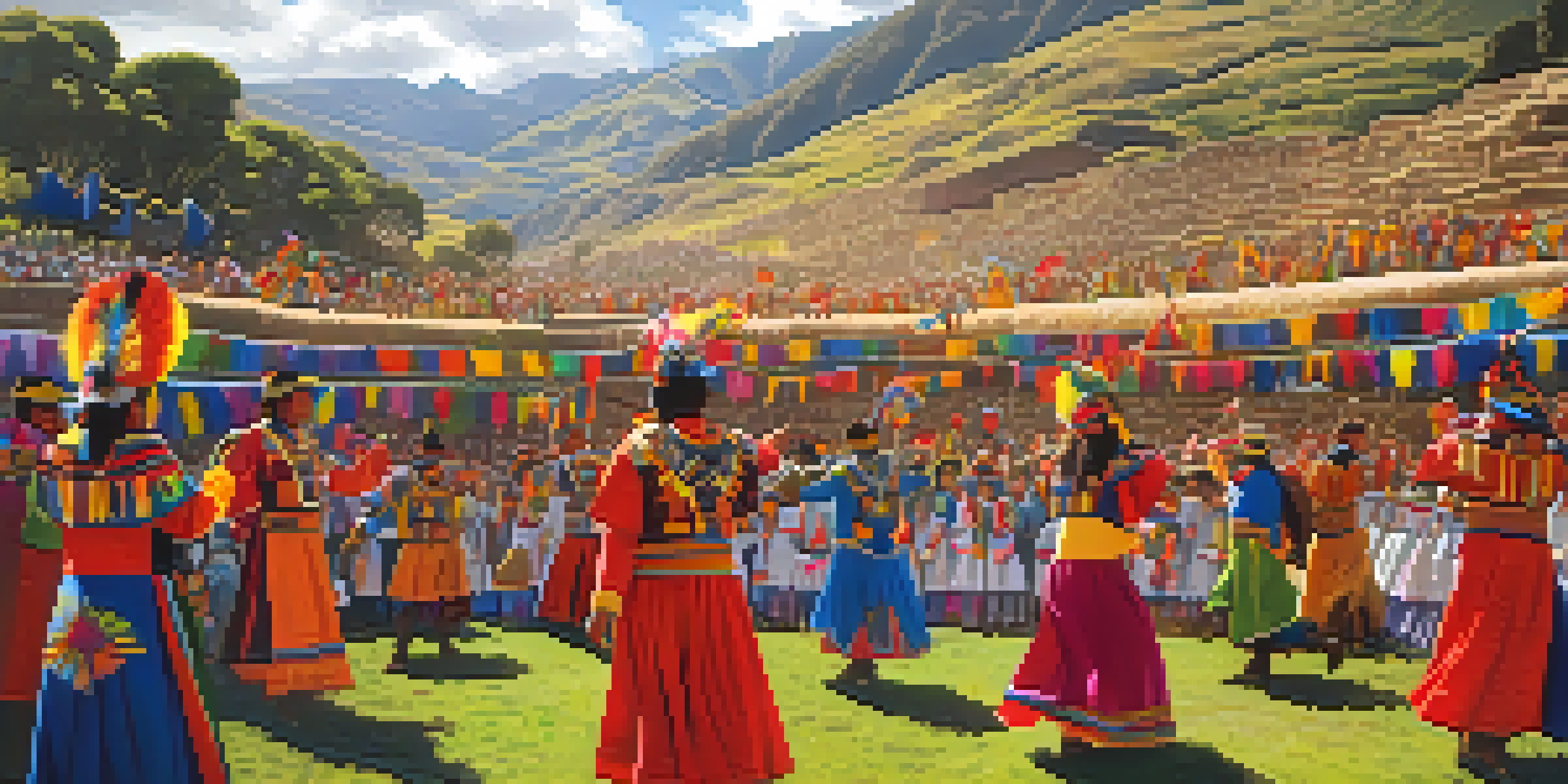The Impact of Inca Religion on Contemporary Peruvian Society

Understanding Inca Religion and Its Core Beliefs
Inca religion was deeply intertwined with nature and the cosmos, focusing on the worship of deities like Inti, the sun god, and Pachamama, the earth goddess. These beliefs were not just spiritual; they were foundational to the Inca way of life, influencing agriculture, architecture, and societal structure. This reverence for nature forged a connection that is still palpable in modern Peru, where many traditions echo these ancient practices.
The Role of Festivals in Preserving Inca Traditions
Festivals in Peru today often reflect the rich tapestry of Inca religion, celebrating agricultural cycles and honoring deities. Events like Inti Raymi, the Festival of the Sun, bring communities together, reviving ancient rituals and connecting people to their heritage. These celebrations not only preserve the past but also foster a sense of identity and belonging among Peruvians, bridging the gap between ancient and contemporary life.
Inca Religion and Nature Connection
Inca religion emphasized the worship of nature deities, shaping agriculture and societal structures.
Syncretism: Blending Inca Religion with Catholicism
The arrival of Spanish colonizers led to a fascinating fusion of Inca beliefs with Catholicism, creating a unique spiritual landscape in Peru. Many indigenous rituals were incorporated into Catholic practices, allowing for the continuation of Inca traditions under a new guise. This syncretism highlights the resilience of Peruvian culture, as communities adapt and incorporate various beliefs into their daily lives.
Inca Spirituality and Community Identity Today
In contemporary Peru, the remnants of Inca spirituality play a crucial role in shaping community identity. Many Peruvians identify with their Inca ancestry, drawing strength from these ancient beliefs to navigate modern challenges. This connection to the past fosters unity among diverse groups, as they collectively celebrate their shared heritage and cultural roots.
Festivals Unite Modern Peruvians
Festivals like Inti Raymi celebrate agricultural cycles and foster a sense of identity by connecting people to their Inca heritage.
Inca Religion's Influence on Peruvian Art and Craftsmanship
The impact of Inca religion is evident in Peru's vibrant art and craftsmanship, where traditional motifs and symbols are frequently used. Artisans often draw inspiration from ancient spiritual themes, creating pieces that reflect both historical significance and contemporary relevance. This blending of past and present showcases the ongoing influence of Inca beliefs in shaping Peruvian artistic expression.
The Revitalization of Indigenous Practices in Modern Society
In recent years, there has been a resurgence in the appreciation of indigenous practices, including those rooted in Inca religion. Many Peruvians are embracing their ancestral customs, seeking to revitalize traditional knowledge related to agriculture, medicine, and spirituality. This movement signifies a growing recognition of the value of these ancient practices in addressing modern environmental and social issues.
Revival of Indigenous Practices
Recent years have seen a resurgence in valuing indigenous practices, highlighting their relevance in addressing contemporary challenges.
Education and Awareness of Inca Religion's Legacy
Educational initiatives in Peru are increasingly focused on teaching the history and significance of Inca religion and its impact on society. By incorporating indigenous perspectives into school curricula, young Peruvians are gaining a deeper understanding of their cultural heritage. This awareness not only fosters pride in their ancestry but also encourages a more inclusive view of Peru's diverse cultural landscape.
The Lasting Legacy of Inca Religion in Everyday Life
The legacy of Inca religion continues to resonate in the daily lives of many Peruvians, influencing practices in agriculture, health, and spirituality. For example, the traditional Andean practice of 'ayni,' or reciprocity, reflects Inca values of cooperation and mutual support. This enduring influence underscores how deeply ingrained these ancient beliefs are in shaping contemporary Peruvian society, creating a rich cultural mosaic.